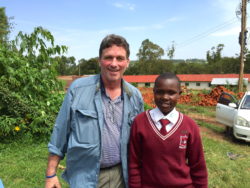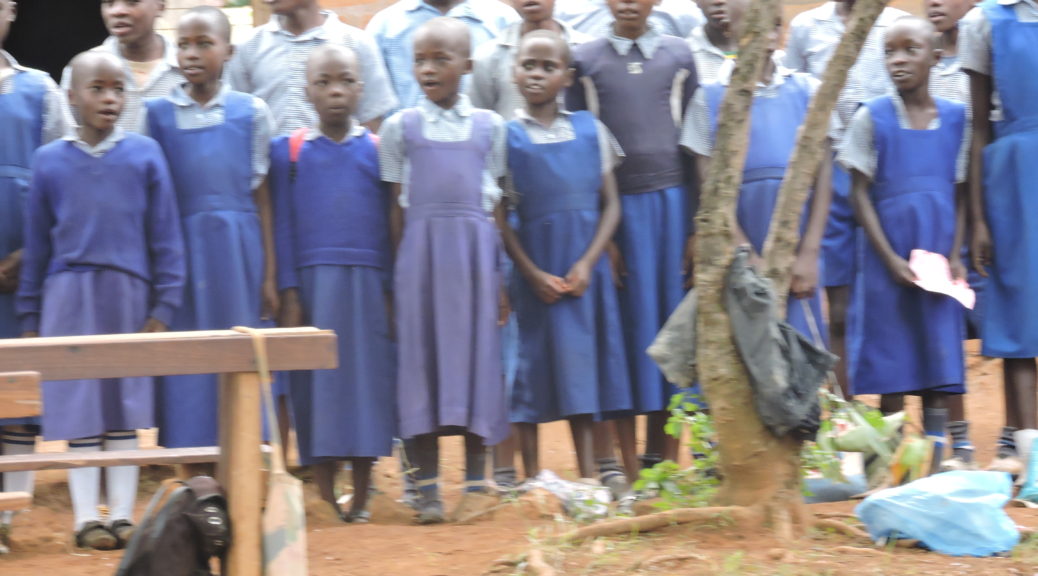DAGO, KENYA
In 2009, I spent about two weeks in the tiny village of Dago, Kenya and came away determined to do what I could to improve the lives of these hard-working, incredibly kind but extremely poor people. I decided I wanted to make the world a better place, one child at a time. Most of us think about how we can make the world a better place but we all struggle with just how to do it. The challenge is daunting.
Dago is a village in southwestern Kenya of 3,000 people where the average family income is less than $2 per day. They live in tiny mud huts with no plumbing. There has been no electricity but this year the school, orphanage and a few homes have obtained limited electricity. AIDS is a major problem and most people will have little to no medical care in their life. Average life expectancy is early forties. Most clothes are hand-me-downs from charities and food insecurity is a major problem. The average person has only four years of education and few have ever gone to high school because the government does not pay any of the costs of high school.
 I continued my visits to Dago in 2011, 2013, 2015 and 2017.
I continued my visits to Dago in 2011, 2013, 2015 and 2017.
In 2011 we started the “Bernard and Elsie Weiss Dago Scholarship Fund”, named after my late parents, with the goal of sending as many Dago children as possible to high school. To date, we have awarded thirty-two full four year high school scholarships and four of our early students are now in University.
At the end of eighth grade the students take a test called the, “Kenyan Certificate of Primary Education”. The results of this test are how we determine who gets a scholarship. At the end of each school year, we award new scholarships based on the amount of money we have raised. We have two key rules though on how we use our money and the way we choose:
- All money is equally divided between boys and girls. This is because life is much tougher for a girl than a boy growing up in Dago. Thus, the girls tend not to do as well on the exam as boys, but not because they are not as smart. They have many obstacles the boys do not have. If we awarded scholarships just based on the scores, the girls would have a hard time receiving one. We know if we give a girl a chance, she will do just as well as a boy, but she needs the opportunity.
- When we award a scholarship it means we have enough money in the bank for all four years. We do this because there are many scholarship programs in Africa where they raise the money one year at a time and quite often a donor will decide not to keep donating and then this child can no longer go to school. We would never want to tell a child that they cannot continue with their education because we are out of money.
HOPE FOR DAGO
I use the word “hope” a lot because that is what I want these children to feel we are giving them. We are not just donating money. We are very involved in their lives by visiting them every two years and seeing all of their report cards. We work directly with the school and many of the adults in Dago. We connect through letters on a regular basis. We want them to know that we care about each of them, their future and we are also holding them accountable for the opportunity they have been given. Things like email, texts and Skype have made communications easier the last few years.
Something I did not realize when I started this is that we are not just giving hope to the children, we are giving hope to the entire community of Dago. I have seen dramatic changes in the community since my first visit. There is a lot more interest in making education a priority for the children and in doing everything they can to make sure the Dago Primary School (where we choose all of our children from) keeps getting better and better. Previously, a lot of children quit school at a very young age because they knew they had no chance of ever getting to high school. They might as well quit and go out into the fields and make a dollar or two a day to help their family. Now children have hope that if they work hard and do well in school they might be able to get a scholarship to pay for high school.
In my trips back to Kenya, my main task is to visit the children at their various high schools. They are all boarding schools and usually are about twenty to forty miles from Dago. I hire a driver, rent a car and head to each of the schools. In my recent visit, we visited twenty-five students at eighteen schools.
It is an incredible experience to spend time with our students at their high school. They realize they have been given an opportunity most of the children they grew up with do not have. Also, the entire world has been opened up to them because of TV and some access to the internet. In addition, the living conditions at high school, while still very poor by western world standards, are significantly better than back in Dago. They have electricity and plumbing so their living conditions and the quality of the classrooms are significantly superior to back home. They are experiencing a better life and learn that if they work hard, there can be an even more advantageous life ahead of them.
The students get all of this for about $3100 US for all four years. This covers tuition, room and board, books, uniforms, fees, etc. This very small sum of money (by western standards) gives a poor child the opportunity for a great life. Also, when I ask them about what they want as an adult, part of their answer always includes how they want to give back to other children, the way they have been helped. The bottom line is that it is really pretty easy to make the world a better place, one child at a time. As the saying goes, just do it!
For more information about educating the children of Dago, please go to www.hopefordago.org

